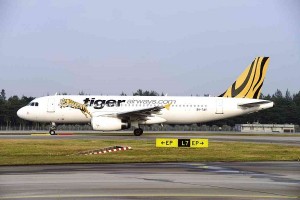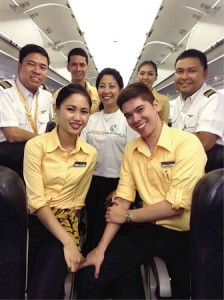With the Philippines poised to become the next tiger economy, regional low-cost carrier Tiger Airways is anticipating more demand for flights connecting the country to its Asian neighbors and even beyond. “It’s a niche we are eager and equipped to serve,” newly-appointed president and CEO Olive Ramos says in an interview.
Eager to open up new routes in the country, Tiger Airways will make its formal debut as Tiger Airways Philippines on July 10.
“Tiger Airways is the leading airline and travel partner connecting people across Asia Pacific. It is a distinguished regional brand that differentiates itself in terms of safety and reliability,” Ramos says.
As to how Tiger Airways can open up passengers’ minds about trying out a new entrant in the Philippine market, Ramos says, “We have a small fleet of five aircraft, but that drives us to establish fundamentals first before moving to next level, that is, growing our fleet.”
Ramos says she monitors the performance of the Tiger Airways fleet with daily reports on on-time performance as well as delays. “I get a test message right away when any of our flights are delayed, and one of my first questions is: what help do you need? We value transparency and those who report delays and such will not be punished for being open. We focus on corrective action, not punitive action,” Ramos said.
Passengers are often stressed by the traffic, long lines, and waiting times at the airport, Ramos says, which is why Tiger Airways takes extra effort to make them comfortable and put their mind at ease. “On Time Performance is important to us, but we do recognize their are some variables that are non-controllable, such as immigration and airport congestion. These things we communicate readily with passengers. For the controllable variables such as maintenance and staff, we have a rigid process for deploying aircraft on time and we have good partners in repairs and maintenance,” Ramos says.
It may be unavoidable to have to deal with a demanding and/or dissatisfied customer now and then, but Ramos says staff are trained to communicate with them and treat them well. “If there is more than three hours delay, we give them food, and one proven and tested formula to ensure the cabin crew treat passengers well is to treat the crew well. More than the salary—though I would say we pay a little above market— our staff can count on us to care about them and to treat them as professionals,” Ramos says.
Together with the Filipino personnel’s warm and hospitable traits, the airline will be “the one to beat” in the coming years, Ramos says.
And right after the debut of its Philippine brand, Tiger Airways is opening a pioneering Singapore-Kalibo flight on July 18, 2013. This will allow travellers to go straight from morning meetings in Singapore to an all-night beach party in Boracay without having to make a stopover in Manila or Clark.
This route, Ramos says, is for business people making a quick getaway, for overseas workers in Singapore vacationing with their friends and family for the weekend, and for Filipinos who want to go from beach partying to shopping in Singapore. And why not, with consumer spending soaring in this investment-grade, increasingly affluent economy?
“Boracay is where tourists can really let their hair down in a party atmosphere. Those who want something different from the more typical, meditative beach atmosphere are really attracted to Boracay,” Ramos said. “It’s just one of many niche markets we can serve.”




